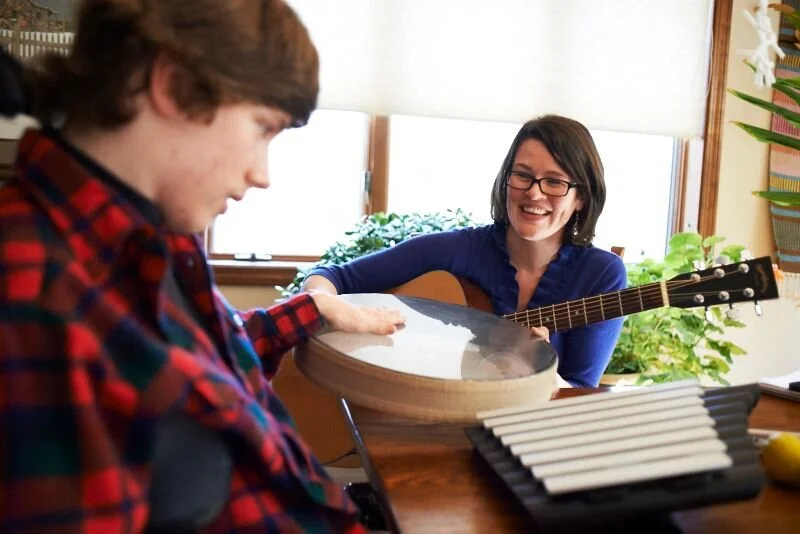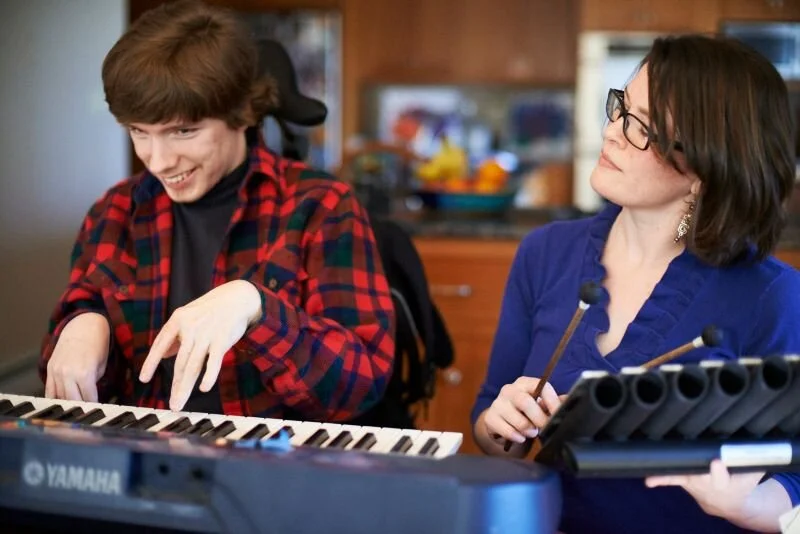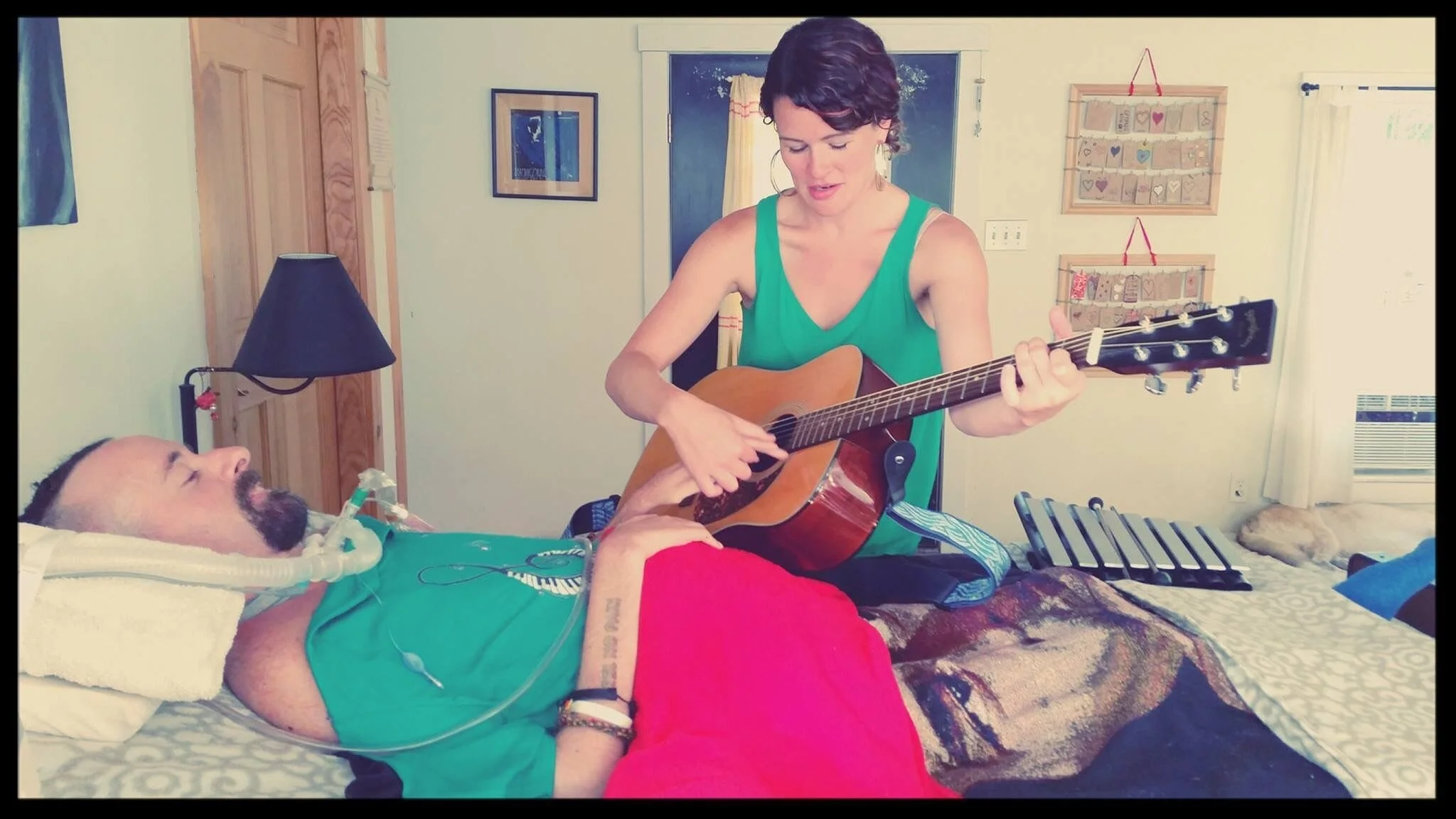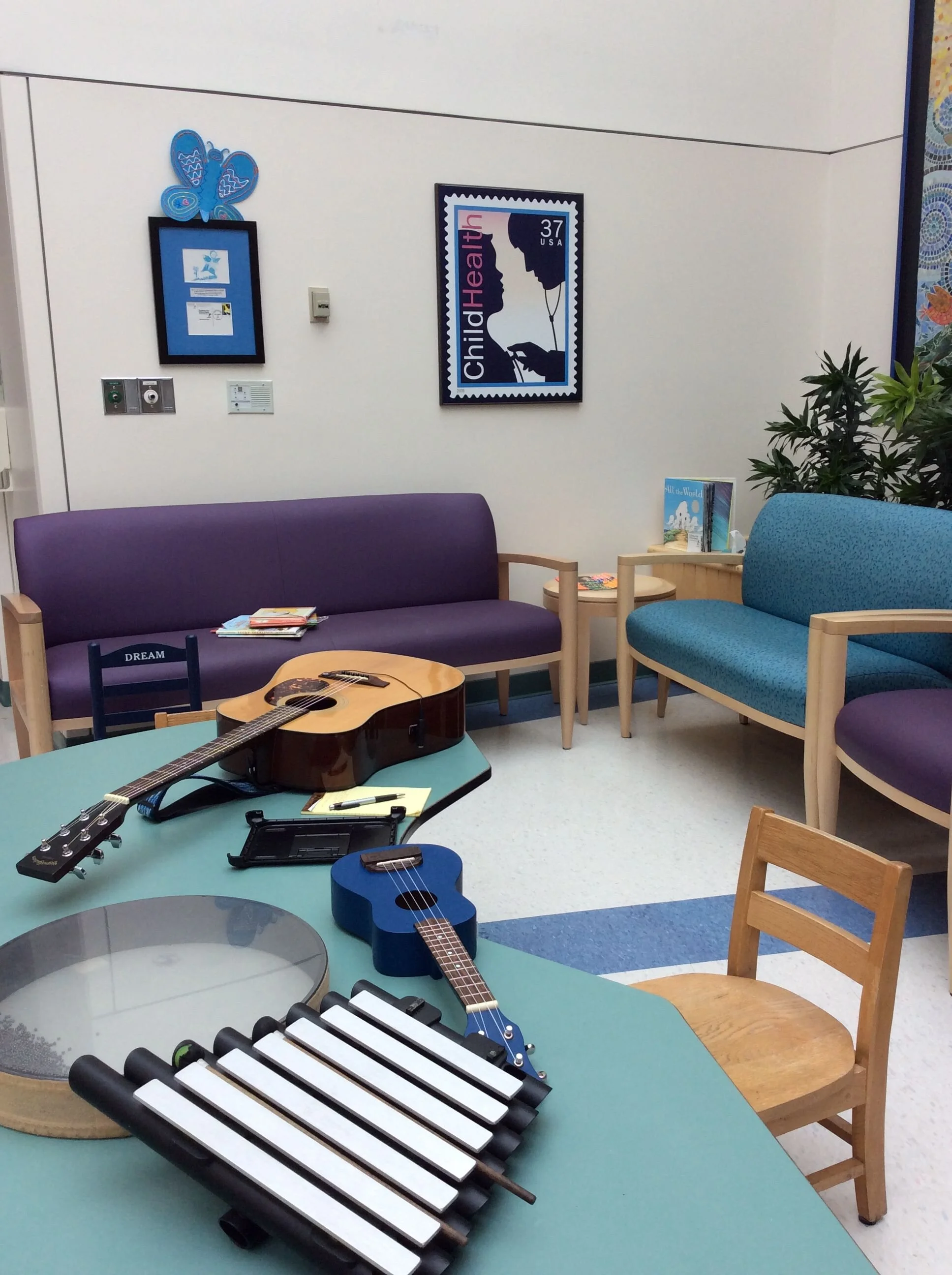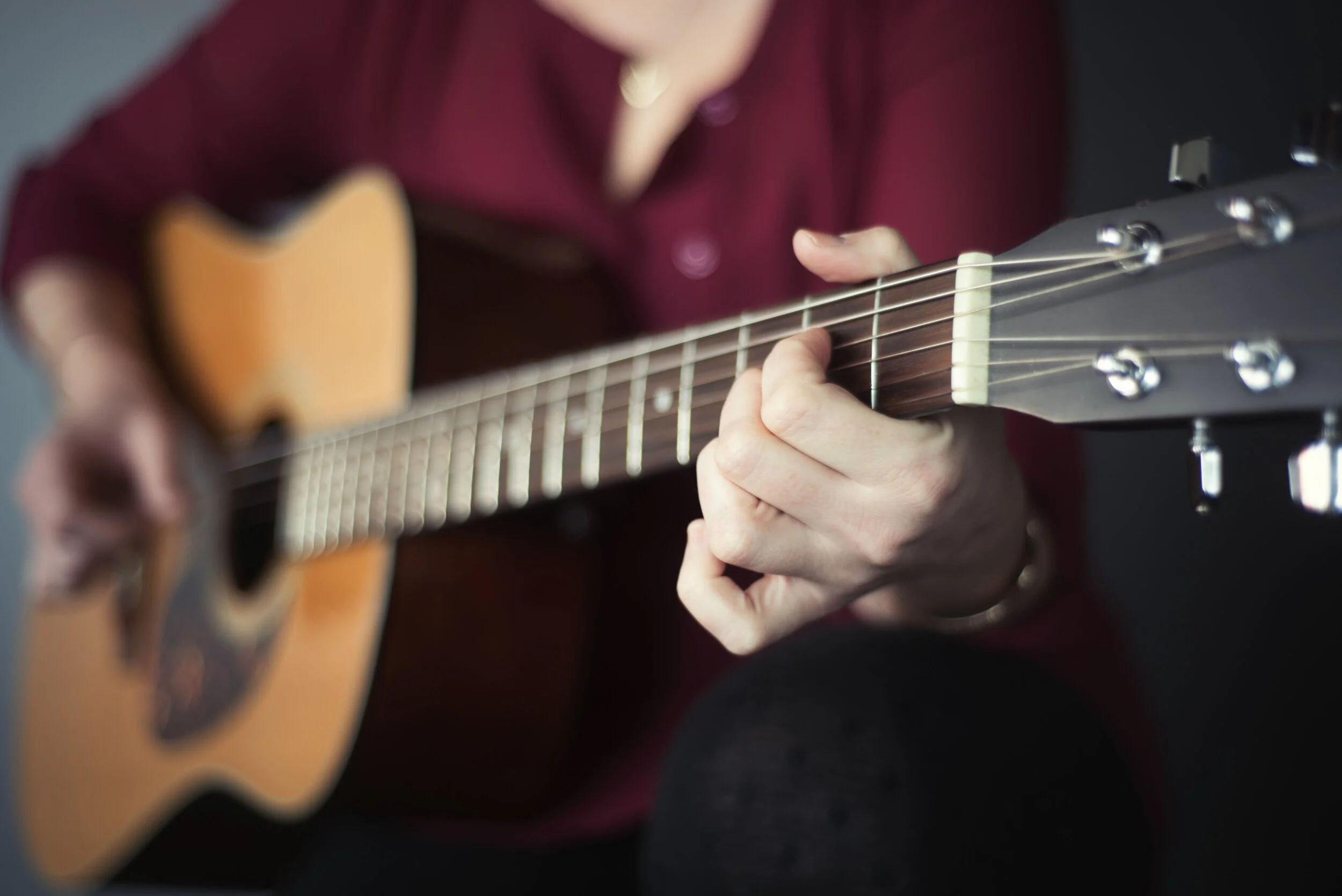These goals are addressed by using rhythm, melody and movement techniques. For example, rhythmic auditory cueing is a technique in which rhythm is used to facilitate movement and improve gait. This is done by providing a uniform beat that acts as an external cue to guide a patient’s movements and has been shown to benefits gait, walking speed and stride length.
Read MoreI’ve partnered with Lucy’s Love Bus, a wonderful nonprofit that sponsors non-medical therapy services for children with cancer and their families, for a monthly ukulele club called Lucy’s Aloha Band for kids from all over New England.
This group isn't a traditional music therapy group since we didn't do intakes or evaluations of clients – it's more for fun and social/community-building, as well as expression. Generally, if kids are experiencing pain or anxiety, music will help reduce those, but that isn't a goal that we specifically talk about or address in the group.
Ukulele is a great instrument for beginners, non-musicians, and especially for kids (because of its small size!).
Read More“…educating others and advocating for music therapy has always been a part of what I do. My advocacy work is something I’m proud of…”
Read MoreMusic therapy assessment tools look at every aspect of a patient’s health, including social-emotional, cognitive and physical. I often use the same assessment tools that other therapy modalities use.
Read MoreThis quick music and art exercise will help you learn a bit more about how music can interact with our brain to change our mood. It may help you explore your emotional connection to music or how you can use music as a tool throughout your day.
Read MoreWith the world still in the midst of a pandemic, I’m looking ahead in this new year to May 1, which will mark the 10-year anniversary of my practice. Though it feels like an odd time to celebrate, I have realized it is a great time to honor what I built in pre-COVID times, how the practice has adapted during an extraordinary time, and to hope for a brighter future for us all.
Read MoreOnce goals are developed, I come prepared with musical activities and a rough plan for each session, but am always flexible and open to each individual’s mood and energy on any given day. Often a session will take us in a different direction than my initial plan and that’s fine, even wonderful.
Read More“I could keep ‘perfecting’ it ad nauseum,” wrote one participant. “Instead, I am being vulnerable and sharing it unfinished, too dramatic at times, a little slow in tempo, and altogether quite imperfect. Yet the process was powerful for me and re-awakened some parts of me that have been quiet for a couple of decades.”
Read MoreAlthough I work with many different ages and populations as a music therapist, my work primarily focuses on oncology patients, and adults with intellectual or developmental disabilities and brain injury. I also work with people experiencing general stress. I develop clear goals and objectives for each individual client that work in conjunction with their overall plan of care using both interactive and receptive music therapy techniques.
Read MoreThrough music therapy, clients' abilities are strengthened and transferred to other areas of their lives. For example, music therapy was an integral part of Congresswoman Gabby Gifford’s rehabilitation to regain her speech after surviving a bullet wound to her brain… Music therapists work with adults with Parkinson’s disease to improve motor function and older adults to lessen the effects of Alzheimer’s. Music therapy can reduce physical pain and provide emotional support for clients and their families.
Read MoreThis holiday season, send a song. It’s a simple, environmentally friendly and totally unique gift.
Read MoreIt’s the music. It’s the people, that make the music happen. And yes- the promoters, the bouncers, the managers- they all bring the music to each venue; but the music itself is made up of musicians. When I say musicians, I mean the whole band, including the sound engineers (whether they are hired by the band or the venue, they’ve got trained ears and are musicians).
Read MoreA good practice is to consider what the group would feel like if it were in person. And then with each decision you make, consider whether that would make sense for the group in person. Communication is really key.
Read MoreTurning the tides of environmental destruction is possible. Improving education and supporting teachers is possible. Providing access to quality healthcare and healing is possible. Finding common ground is possible. And I believe the arts can help with that.
Read MoreInfection control is a pretty hot topic in any healthcare setting and should be, in my opinion, a hot topic in any setting. If you don’t want to get sick, avoiding germs is key. Even more important is not *spreading* germs to other people- especially if you are coming in contact with anyone with compromised immune systems. So even if you’re feeling great, you may still be carrying disease from client to client. On your hands, your shoes, your gear.
Read MoreIt’s helpful to know what the patient’s preferred music is, and I’ve been so happy to hear that many medical centers and nursing homes are now including this information on intake forms. I like to ask patients or their families how they ‘use’ music- what do they listen to while falling asleep? What music energizes them? What are their musical memories? Having a more complete picture of a client’s ‘musical self’ can help provide them with the comfort that is needed towards the end of life. If your family member has an advance directive, ask them to include this information.
Read MoreConsider adaptive instruments and mallets - I especially like T shaped mallets for folks who have difficulty gripping a regular drum stick. It is also easy to adapt instruments like guitar just by tuning them differently- an open tuning is a good way to start if you just want a person to have a positive experience at first.
Read MoreThis disability-friendly dance party is co-sponsored by Maine Music & Health, LLC and the Portland Seadogs. Join the Kastaways (the Seadogs Mascot band!) for an unforgettable afternoon of dancing and socializing! All teens and adults are welcome, including staff and families. June 2nd, 2-4pm at One Longfellow Square
Read MoreIf you're a music therapist, music teacher, activities director, or anyone who would like to incorporate instruments in your healthcare setting, this list is for you.
Read MoreMy heart was so full from being in the audience, I wished everyone I knew could have experienced it. Particularly some of my clients who are differently-abled or whose bodies don't quite fit around the musical instruments they're trying to play. It can be so discouraging to a) not have the adapted tools necessary to create and b) not have representative role models. But they are out there. And the more opportunities for the general public to see these role models, the BETTER.
Read More




